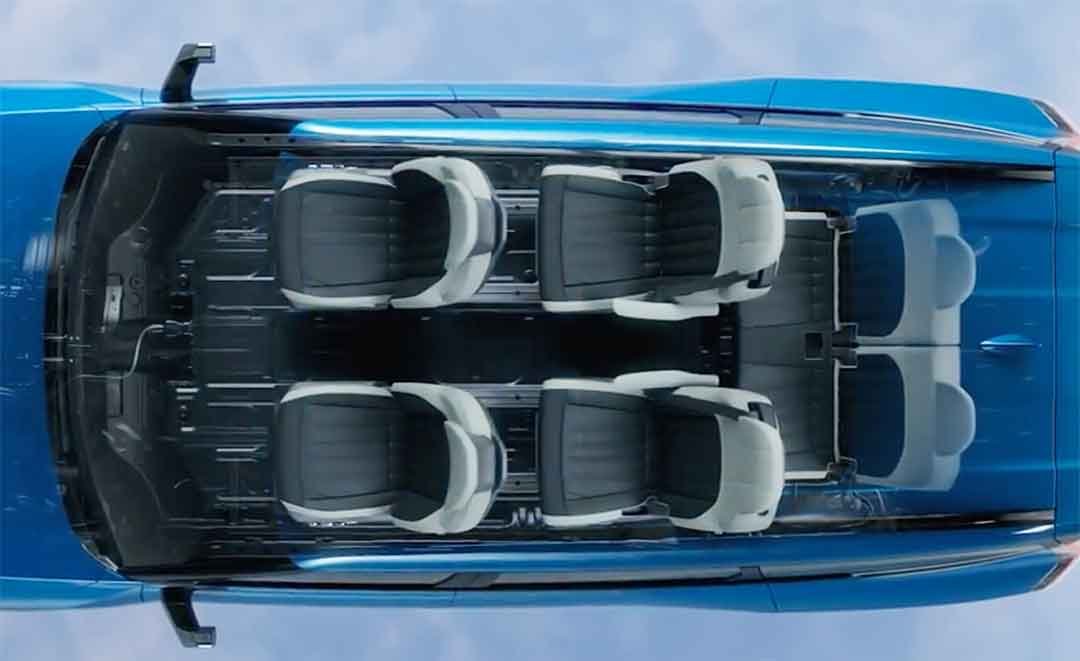Updated: 12:08.2023
As more and more people worldwide switch to electric cars, it is becoming increasingly important for anyone considering making the switch – including taxi drivers and PCO drivers – to understand both the cons and pros of driving an electric car.
Electric Cars Cons and Pros an Introduction

Electric cars offer several advantages over their petrol-powered counterparts: they are eco-friendly, cost less on fuel over time and have fewer moving parts that require regular maintenance.
However, there are also some potential downsides to owning an electric vehicle; these may include higher upfront costs, limited range or availability of charging points in certain areas.
In this blog post, we’ll look at both sides of the debate so that you can decide if switching to an electric car is right for you.
Electric Cars Cons and Pros Lists
Some potential electric cars cons and pros that may not receive as much attention include the following:
Electric Cars Cons – Disadvantages
- Limited driving range compared to gasoline vehicles can be an issue for long-distance travel.
- Charging infrastructure may be less widely available, especially in rural areas.
- Higher upfront cost compared to similar gasoline vehicles.
- Battery degradation over time, which can reduce the driving range of the vehicle and may require costly replacement or repairs
- Rapid Charging highly influences Battery Warranty – Don’t forget to check small print for battery warranty.
- Limited availability of models and longer waiting times for delivery
- Electric Vehicles are Less efficient in the winter.
- Soaring Energy Prices and Inflation cause EV recharging costs.
Electric Cars Pros – Advantages
- Electric vehicles (EVs) can help reduce pollution
- Grants and support schemes to switch to Electric Vehicles
- Reduced dependence on foreign oil
- Lower long-term costs, as electricity is cheaper than gasoline and Less price on parts that can wear out.
- Quieter operation, which can be beneficial for noise pollution
- Potentially faster acceleration than internal combustion engine vehicles
- Grants and support schemes to switch to Electric Vehicles
Electric Cars Cons and Pros Lists in Detail Analysis
See below the key areas that you need to focus on regarding the cons side / disadvantages of Electric Cars in 2023.
1. Limited driving range compared to gasoline vehicles can be an issue for long-distance travel.
A limited driving range is one of the cons of electric vehicles (EVs) compared to gasoline-powered cars.
The driving range of an EV refers to the distance it can travel on a single charge. Currently, the average driving range of an EV is around 200-250 miles, although some high-end models can go up to 300 miles or more.
This driving range is generally sufficient for most daily commutes and errands, but it can be an issue for long-distance travel, as it requires more planning and can be more time-consuming. Recharging an EV takes longer than filling up a gasoline vehicle, and charging infrastructure may be less widely available, especially in rural areas.
This can make it difficult for EV owners to plan long-distance trips, as they need to consider the location and availability of charging stations. Additionally, even though the driving range of EVs is increasing over time, they still need the capacity of gasoline vehicles, making them less suitable for people who frequently drive long distances or have long commutes.
However, it’s important to note that the driving range of an EV can be affected by several factors, such as the climate, the type of driving (city or highway), the speed, and the use of the vehicle’s accessories, such as the air conditioning or heating. So, it can be challenging to compare the driving range of an EV with that of a gasoline vehicle.
2. Charging infrastructure may be less widely available, especially in rural areas.
Charging infrastructure refers to the availability and accessibility of charging stations for electric vehicles (EVs). Currently, gasoline stations are less widely available than charging infrastructure, especially in rural areas.
In urban areas, charging infrastructure is more developed, and charging stations can be found at many public places such as shopping centres, parking garages, and workplaces. However, in rural areas, charging stations are less common and may be harder to find. This can make it difficult for EV owners to plan long-distance trips, as they need to consider the location and availability of charging stations.
Additionally, charging stations are of different types, such as Level 1 (120V), Level 2 (240V), and Level 3 (DC fast charging), with each having a different charging speed. Level 1 and Level 2 charging stations are more common, but they take longer to charge the vehicle. Level 3 charging stations are less common but can charge the car much faster.
The need for charging infrastructure can be a significant barrier to the widespread adoption of EVs, as it can make it difficult for people to rely on EVs for their daily transportation needs. However, governments and private companies are investing in the development of charging infrastructure, and it is expected that charging infrastructure will become more widely available in the future.
3. Higher upfront cost compared to similar gasoline vehicles.
One of the cons of electric vehicles (EVs) is that they generally have a higher upfront cost compared to similar gasoline-powered cars. The cost of EVs is primarily driven by the cost of the batteries, which are a significant component of the vehicle.
Currently, batteries are still relatively high, making EVs more expensive than similar gasoline vehicles. Additionally, EVs have fewer economies of scale than internal combustion engine vehicles, which are produced more significantly and have more competition.
However, it’s important to note that the cost of EVs decreases over time as battery technology improves and economies of scale increase. Also, the long-term cost of owning an EV can be lower than that of a gasoline vehicle, as EVs have lower fuel and maintenance costs. Additionally, some governments and private companies are offering incentives and subsidies to encourage EV adoption, which can help offset the higher upfront cost.
Furthermore, when considering the total cost of ownership, it’s essential to view all the costs associated with owning a vehicle, such as fuel costs, maintenance and repair costs, insurance costs, and resale value. In this sense, the prices of EVs may be less than those of traditional vehicles, especially over the long term.
4. Battery Degradation
Battery degradation is one of the cons of electric vehicles (EVs), as it can reduce the vehicle’s driving range over time and may require costly replacement or repairs.
Battery degradation refers to the gradual loss of capacity of the battery over time, which can happen due to regular use, ageing, and exposure to extreme temperatures. As the battery degrades, the vehicle’s driving range will decrease, making it less convenient to use.
The rate of battery degradation depends on several factors, such as the type of battery, the driving patterns, the temperature, and the quality of the battery management system. Lithium-ion batteries, which are currently the most common type of battery used in EVs, are expected to degrade by around 20% after 8 years of use.
Battery degradation can be mitigated by using a good battery management system, avoiding extreme temperatures, and using the vehicle to minimise the stress on the battery. Additionally, EV manufacturers offer a battery warranty, which can help mitigate the cost of battery replacement or repairs.
5. Battery Warranty Concern for PCO and Taxi Drivers
Battery warranty is based on how you recharge the battery regularly. For example, If you are a PCO Driver with Electric Car for your Private Hire work, you will be using Rapid chargers from time to time, which is unavoidable. Based on the terms and conditions of Battery warranty with EV manufacturers, they decrease if you use a Rapid charger regularly. Please check or ask about this before you commit.
However, it’s important to note that battery replacement or repairs can be costly and add to the overall cost of owning an EV. Additionally, even though the vehicle’s driving range will decrease over time, the car itself will still be functional and can be used for shorter trips.
6. Limited availability of Electric car models, range and colours and longer waiting times for vehicle delivery.
Currently, the selection of Electric Car models available for purchase is relatively limited compared to gasoline vehicles. While the number of EV models available is increasing, it’s still not as wide as the selection of gasoline vehicles. This can make it difficult for consumers to find an EV that meets their specific needs and preferences.
Additionally, the demand for Electric Car is currently high, and this has led to longer waiting times for delivery. This can be a significant inconvenience for consumers, as they may have to wait several months before they can take delivery of their vehicle.
This limited availability and long waiting times are caused by a combination of factors, such as the high cost of batteries and the limited production capacity of EV manufacturers. However, as the technology improves, the costs decrease, and the production capacity increases, it’s expected that the availability of EV models will improve, and the waiting times will decrease.
It’s worth noting that the availability and delivery times of EVs are subject to change depending on the country, region, and the specific model. Some models and brands have longer waiting times than others, and it’s always recommended to check with the manufacturer or the dealership for the most up-to-date information.
7. Electric Vehicles are Less efficient in the winter.
Electric cars can be less efficient in the winter because the battery’s performance is reduced in cold temperatures. The chemical reactions inside the battery slow down, which reduces the overall power output. Additionally, the heater in the car uses extra energy to warm the cabin, which can further drain the battery.
8. Soaring Energy Prices and Inflation cause recharging costs.
Electric Vehicle Recharging costs have increased dramatically past six months. Current Economic Inflation and Energy crises play a vital part.
See below the key areas that you need to focus on regarding the pros side / advantages of Electric Cars in 2023.
1. Electric vehicles (EVs) can help reduce pollution.

Electric vehicles (EVs) can help reduce environmental pollution in several ways.
- Zero Emissions: EVs produce zero emissions at the tailpipe, unlike internal combustion engine vehicles, which have harmful pollutants such as carbon monoxide, nitrogen oxides, and particulate matter. These pollutants contribute to poor air quality, negatively impacting human health and the environment.
- Renewable energy: Electric vehicles can be powered by renewable energy sources such as wind and solar power, which produce no emissions during electricity generation. This can help to reduce the overall carbon footprint of the vehicle and reduce the pollution caused by power generation.
- Energy Efficiency: Electric vehicles are much more energy-efficient than internal combustion engines. They convert about 60-70% of the energy stored in the battery into power to move the car, while internal combustion engine vehicles only convert about 20-30% of the energy stored in gasoline into power. This means that EVs use less energy to cover the same distance, which can help reduce the pollution caused by the transportation sector.
- Reduced dependence on oil: Electric vehicles can help to reduce the reliance on oil, which is a finite resource that requires significant energy and resources to extract, transport, and refine. Oil production is also associated with several environmental and social issues, including air pollution and greenhouse gas emissions.
- Battery recycling: Battery recycling can also be a way to reduce the pollution caused by the manufacturing and disposal of EV batteries. Recycling batteries can help to recover valuable resources and reduce the environmental impact of mining new materials.
It is worth noting that the eco-friendly benefits of EVs depend on the source of electricity used to charge the vehicles. The environmental benefits will be less significant if the electricity used to charge the EVs is generated from non-renewable sources such as coal.
2. Grants and support schemes to switch to Electric Vehicles
Government grants, EV manufacturers and Private companies offer discount facilities to cut initial purchase costs and switch to Electric vehicles.
UK Government offers and help people to switch Electric cars or Vehicles so that you can cut the initial investment to purchase the Electric Car.
Read more about Government Grant: https://www.gov.uk/plug-in-vehicle-grants
In the UK and Worldwide, Uber is offering a partner program called “Reduce emissions with Uber” for PCO – Private Hire and Taxi Driver grant to help PCO and Taxi drivers switch to Electric Cars.
3. Lower long-term costs.
Low long-term costs are one of the benefits of electric vehicles (EVs) compared to gasoline-powered cars. This is because electricity is generally cheaper than petrol, and EVs have fewer moving parts that can wear out and require maintenance or replacement.
The cost of electricity varies depending on the region and the generation source, but on average, it is cheaper than gasoline. Additionally, electric motors in EVs have fewer moving parts than internal combustion engines in gasoline vehicles, which reduces the risk of mechanical failure and the need for repairs. This means that EVs need less maintenance over their lifetime and may have lower repair costs.
Furthermore, Electric vehicles don’t require oil changes, transmission fluid changes, or other maintenance that is required for internal combustion engines. This can make them cheaper to maintain over the long term.
4. Quieter operation, which can be beneficial for noise pollution
Quieter operation is one of the benefits of electric vehicles (EVs) compared to gasoline-powered cars. Electric motors are much quieter than internal combustion engines, which produce significant noise, especially at high speeds. This can lead to noise pollution in urban areas and negatively impact the quality of life of people living near busy roads.
In contrast, EVs produce very little noise while driving, which produces them much quieter than gasoline vehicles, which can be beneficial for reducing noise pollution in urban areas. This can lead to a more pleasant and peaceful living environment for people living near busy roads and make it easier to hear other sounds, such as birds and other wildlife.
Additionally, the quiet operation of EVs can also benefit people with hearing impairments, making it easier for them to detect other sounds in their environment.
However, it’s important to note that for pedestrians’ safety, EV manufacturers must add an artificial sound to their vehicles so that they can be heard in the same way as traditional cars. This is especially important for low-speed driving in urban areas.
5. Faster acceleration compares to internal combustion engine vehicles.
Potentially faster acceleration is one of the benefits of electric vehicles (EVs) compared to internal combustion engine vehicles. Electric motors have a high torque output, producing a lot of power and acceleration from a standstill.
This is different from internal combustion engines, which need to rev up to produce more power, which takes time. This high torque output accelerates EVs faster than internal combustion engine vehicles of similar capacity. This can make EVs more fun and provide a sportier driving experience.
However, it’s important to note that the acceleration of an EV is also determined by the battery’s size and capacity and the vehicle’s weight. Additionally, the vehicle’s driving range can be affected by how much power is used for acceleration.
Conclusion
In conclusion, electric vehicles (EVs) have a number of benefits as well as some potential drawbacks.
Pros of EVs typically include reduced dependence on foreign oil, lower long-term costs, quieter operation, and faster acceleration. However, there are also some cons to consider carefully, such as limited driving range compared to gasoline vehicles, lack of charging infrastructure in some areas, higher upfront cost, and battery degradation over time which can reduce the driving range of the car and may require costly replacement or repairs. Additionally, the Limited availability of Electric Vehicles and longer waiting times for delivery also demotivate people to switch to Electric cars instantly.
Present (2023) economic inflation and increased energy prices are significantly affecting Electric Car Charging costs.
Ultimately, whether or not an EV is worth buying depends on the specific needs and preferences of the individual. It’s recommended to research and compare the possible options and consult with experts in the field before making a decision.






